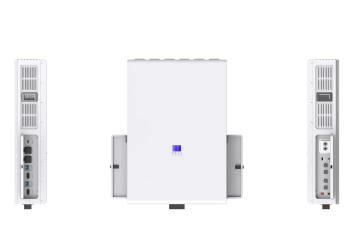- 22
- Nov
Advantage and Disadvantage of 18650 NMC battery and Li-Polymer lithium battery
“” refers to the use of polymers as electrolytes, which are specifically divided into semi-polymers and all-polymers. Semi-polymer refers to coating a polymer (usually PVDF) on the separator to make the battery harder and the battery harder, while the electrolyte is still a liquid electrolyte.
“Total polymer” refers to the use of polymer to form a gel network inside the battery, and then inject electrolyte to form an electrolyte. Although all polymer batteries still use liquid electrolytes, their usage is greatly reduced, greatly improving the safety of lithium batteries. As far as I know, only Sony is currently mass producing all-polymer lithium batteries.
On the other hand, polymer batteries refer to batteries that use aluminum plastic film as the outer packaging of lithium batteries, also known as soft-pack batteries. The packaging film is composed of PP layer, Al layer and nylon layer. Because polypropylene and nylon are polymers, these cells are called polymer cells.

1. Төмен баға
The international price of 18650 is about $1/PCS, and the price of 2Ah is about 3 yuan/Ah. The low-end price of polymer lithium battery is 4 yuan/Ah, the middle-end price is 5-7 yuan/Ah, and the middle-end price is 7 yuan/Ah. For example, ATL and power god can sell for about 10 yuan/ah, but your singles are unwilling to accept them.
2. Cannot be customized
Sony has been trying to make lithium batteries similar to alkaline batteries. 5 battery, no. 7 batteries are basically the same all over the world. But an important advantage of lithium batteries is that they can be designed according to customer requirements, so there is no uniform standard. So far, there is basically only one standard model 18650 in the lithium battery industry, and the rest are designed to meet customer needs.
3. Poor security
We know that under extreme conditions (such as overcharge, high temperature, etc.), a violent chemical reaction occurs inside the lithium battery, resulting in a large amount of gas. The 18650 battery has a metal casing with a certain strength. When the internal pressure reaches a certain level, the steel shell will burst and explode, causing serious safety accidents.
This is why the room where the 18650 battery is tested is usually tightly protected and cannot be accessed during the test. Polymer batteries do not have this problem. Even under the same extreme conditions, due to the low strength of the packaging film, the pressure will only be slightly higher, rupture will not explode, and in the worst case it will burn. Polymer batteries are safer than 18650 batteries.
4. Low energy density
The normal capacity of 18650 battery can reach about 2200mAh, so the energy density is about 500Wh/L, while the energy density of polymer battery can be close to 600Wh/L.
But polymer batteries also have their disadvantages. The important thing is the high cost, because it can be designed according to the customer’s needs, and the research and development costs here must be included. Moreover, the shape is changeable and the variety is wide. The various non-standard fixtures caused during the manufacturing process also generate new costs. The poor versatility of the polymer battery itself also brings design flexibility, and it is often redesigned for customers to produce a 1mm difference.
